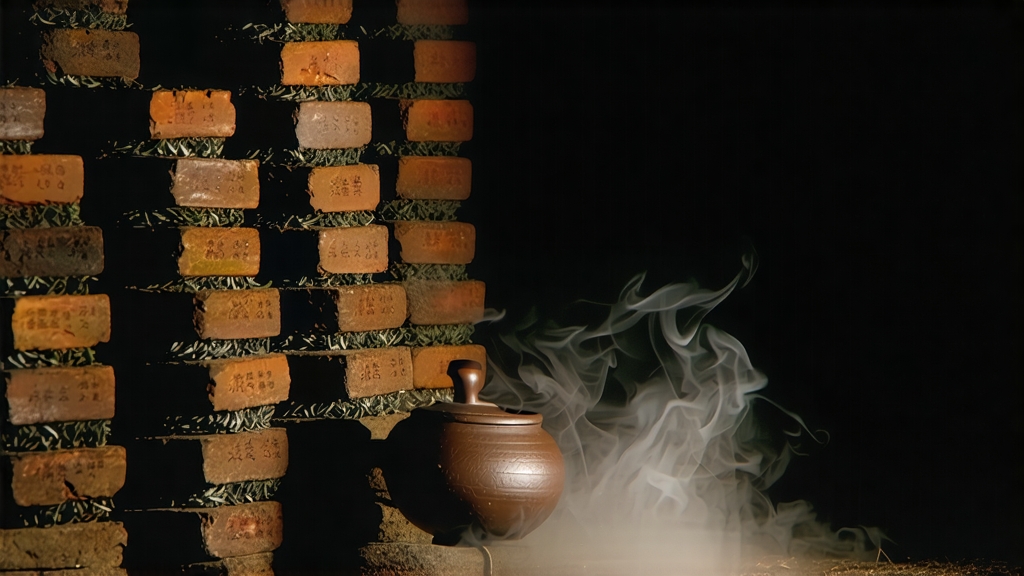
Tucked into the limestone folds of southern Guangxi, where the West River bends like a calligrapher’s brushstroke, Liupu tea has spent three centuries quietly fermenting in subterranean caves while the world above argued over the difference between “black” and “dark.” To international drinkers the word “dark tea” may summon images of Yunnan’s pu-erh alone, yet Liupu—pronounced “lyo-poo”—is the older, subtler sibling, a tea whose very name is borrowed from the tiny port where it was once weighed in silver taels and loaded onto bamboo rafts bound for Hong Kong and, eventually, the kitchens of Malaya. What left those docks was not merely leaf but living culture: bricks of semi-fermented camellia wrapped in rice-husk paper, still breathing, still dreaming of the cave.
History: From Military Ration to Maritime Gold
The genesis story begins in 1644, when the Qing court, anxious about frontier stability, ordered Guangxi to supply compressed tea to the banner troops. The humid march south spoiled green tea within weeks, so farmers in Cangwu County devised a longer, hotter piling phase that encouraged benign molds. The result—earthy, sweet, stomach-settling—traveled better than hardtack. By the 1850s Cantonese merchants discovered that the same bricks, once stored in the cool draft of karst caves near Liupu township, developed a beguiling betel-nose aroma that reminded overseas Chinese of home. Demand exploded; a single 250-gram brick could be traded for two sacks of Sarawak pepper. When the British East India Company sampled it in 1897 they catalogued it as “China Black No. 9,” mistaking the mellow red liquor for Indian Assam. Thus Liupu slipped into global circulation under an assumed identity, a fugitive tea smuggled inside history’s suitcase.
Varietals: Three Faces of the Same Leaf
Although all Liupu is dark tea, the micro-climates of the 24 villages within Wuzhou prefecture create three recognized sub-styles. Cave Liupu (岩窖六堡) is cave-aged for a minimum of five years; the constant 18 °C temperature and 85 % humidity encourage Penicillium liupuensis, a local mold species that imparts a camphor-sweet finish. Basket Liupu (箩筐六堡) is matured in woven bamboo cylinders lined with pomelo peel, acquiring a citrus-amber note and a lighter body favored by Hong Kong teahouses. Finally, Brick Liupu (砖六堡) is the compressed military original, pressed under 12-ton stone lions into 500-gram rectangles, then left to ferment in piles of moist rice straw—ideal for aging decades without crumbling. Each style carries the same genetic leaf—the native Da Ye cultivar, whose leaves can span 18 cm—but time and vessel write different poems on the same page.
Craft: When Leaf Meets Microbe
Harvest begins on Grain Rain day, the last gasp of spring. Only the third and fourth leaves are plucked, mature enough to withstand the microbial marathon ahead. After a brief outdoor withering the leaves are wok-fired at 280 °C for eight minutes, hot enough to blister the epidermis and invite mold spores to the wound. The crucial step is wo dui (“moist piling”), unique to dark teas: the semi-dried leaf is heaped 70 cm high, sprayed with mineral water from the Liupu spring, and covered with hemp canvas. Inside this composting mound temperatures rise to 55 °C; thermophilic bacteria bloom, converting catechins into theaflavins and releasing a scent reminiscent of wet autumn forest. Every 48 hours the pile is turned by barefoot workers who judge readiness by sound—a rustling sigh means turn again, a muffled thud means rest. After 25 days the leaf is dark chocolate, moisture has dropped to 12 %, and the caffeine is partially bound to polysaccharides, explaining Liupu’s paradoxical ability to calm rather than stimulate. The tea is then steamed, shaped, and moved to the caves, where it will hibernate like a bear, waking only when a tea master decides it has dreamt enough.
Brewing: The Gongfu of the Underground
Western brewing guides often treat dark tea like black tea—boiling water, five minutes, milk optional